Module 2: Harvesting on Your Woodland
Lesson One - Values of Forests
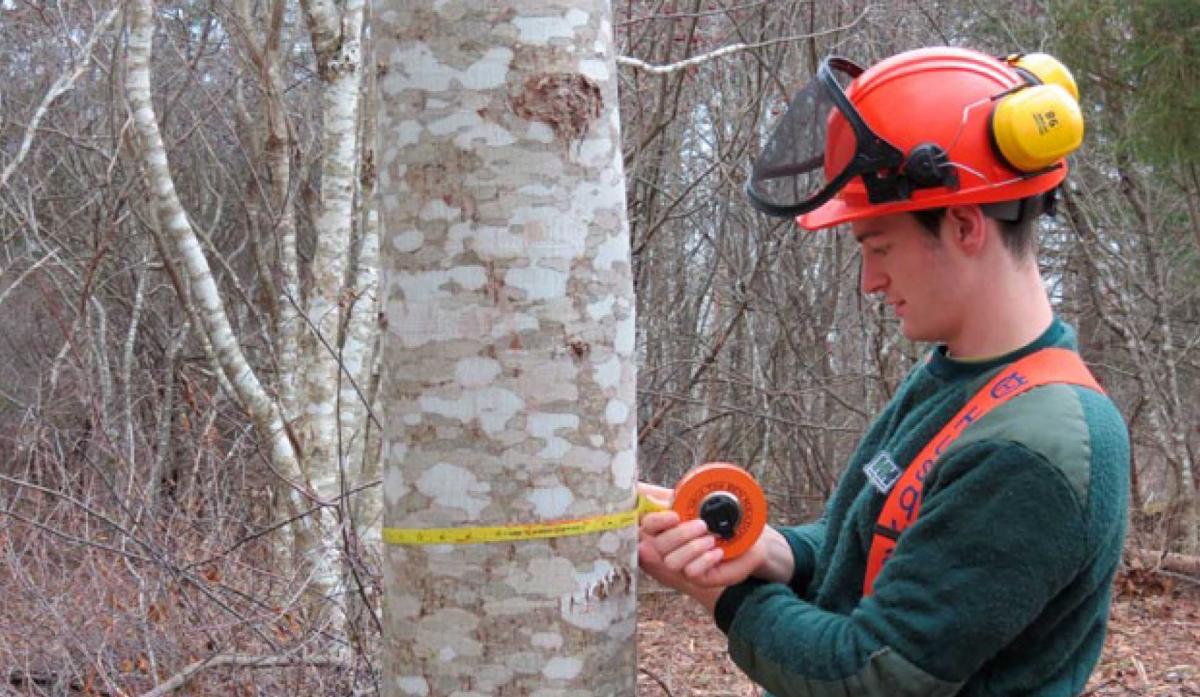
Knowing the species, size and maturity of your trees is essential to good harvest decision-making
Owning and managing woodland is a long-term endeavour. Like humans, trees can take decades to mature, and not all trees on your woodland may be growing at the same rate, nor are they all at the same stages of maturity. Some species, like red spruce, Nova Scotia’s provincial tree, does not mature until it is nearly half a century old. If you ever intend to harvest timber, it is important that you know the species and maturity of your trees. A tree is considered mature when it is old enough to produce healthy seed, and when its annual growth is beginning to decline. Some trees, like red spruce, eastern hemlock, sugar maple and yellow birch, may remain mature for more than a century before their growth begins to slow. Even when they are overmature, trees can still be valuable. They can provide important wildlife habitat for birds and mammals that require large-diameter trees for nests and dens. Often, hollow areas develop at the base of such trees, creating shelter for mammals such as red fox and even black bear.
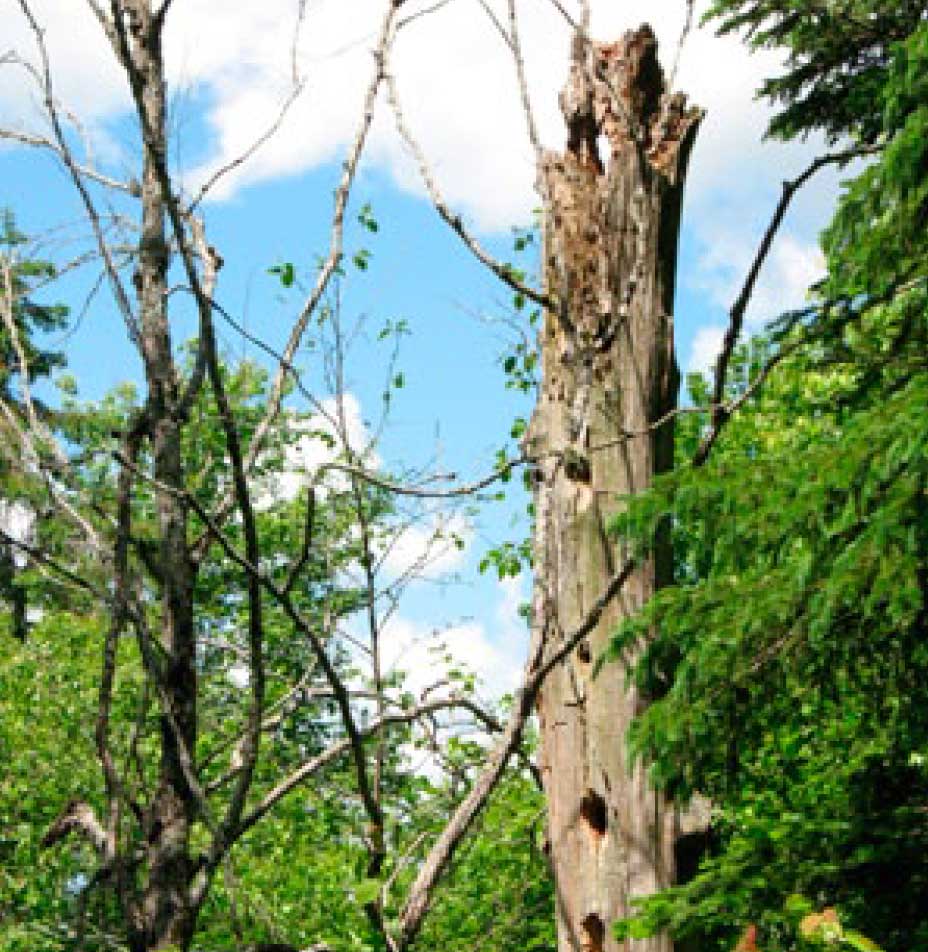 |
| A snag and cavity tree |
Cavities may also be present in areas of the tree high above the ground. These cavities are usually created by primary excavators – such as woodpeckers – that are searching for insects beneath the bark of the tree. These small cavities are important habitat for birds like black-capped chickadees.
As the wood begins to rot the cavity becomes larger and can host northern (and southern) flying squirrels, red squirrels, bats and even voles and mice that venture into a tree’s upper reaches. Overmature trees have values that are not easily quantified in financial terms.
Trees play an important role in the storage of carbon. As they grow, trees absorb carbon from the air and soil, accumulating it in their stems, branches and twigs. By storing carbon, trees help slow climate change.
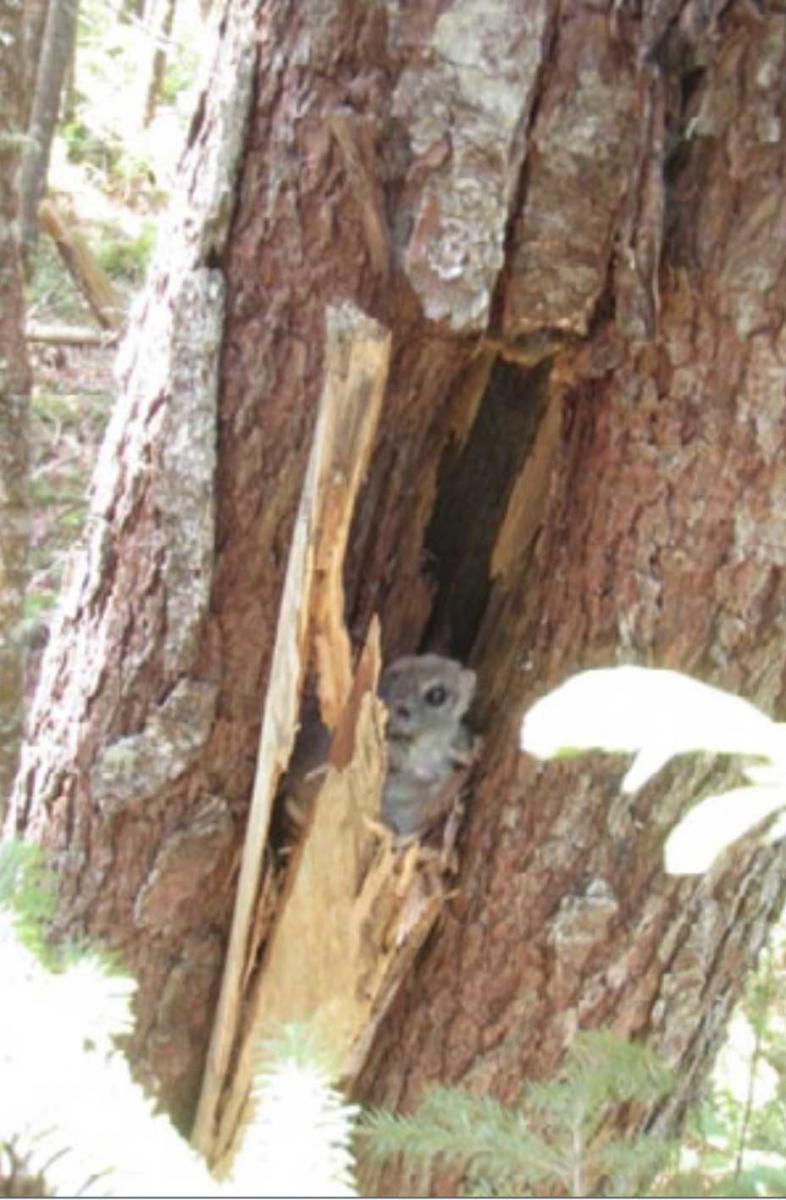 |
| A curious northern flying squirrel |
Forest Soils
The soils beneath a stand of mature and overmature trees are teeming with life. Trees are important in contributing biodiversity to forest soils. Tiny strands of fungi, called mycorrhizea, form dense networks in the soils beneath mature and overmature forests. Mycorrhizae link rootlets of trees with moisture and nutrients that would be otherwise inaccessible.
Many other types of fungi thrive in the forest soils and decaying wood of mature and overmature trees. These include the hyphae of mushrooms such as chanterelles and honey mushrooms, which are edible. A type of fungi called chaga grows on the trunks of birch trees, and can be used for making a tasty tea.
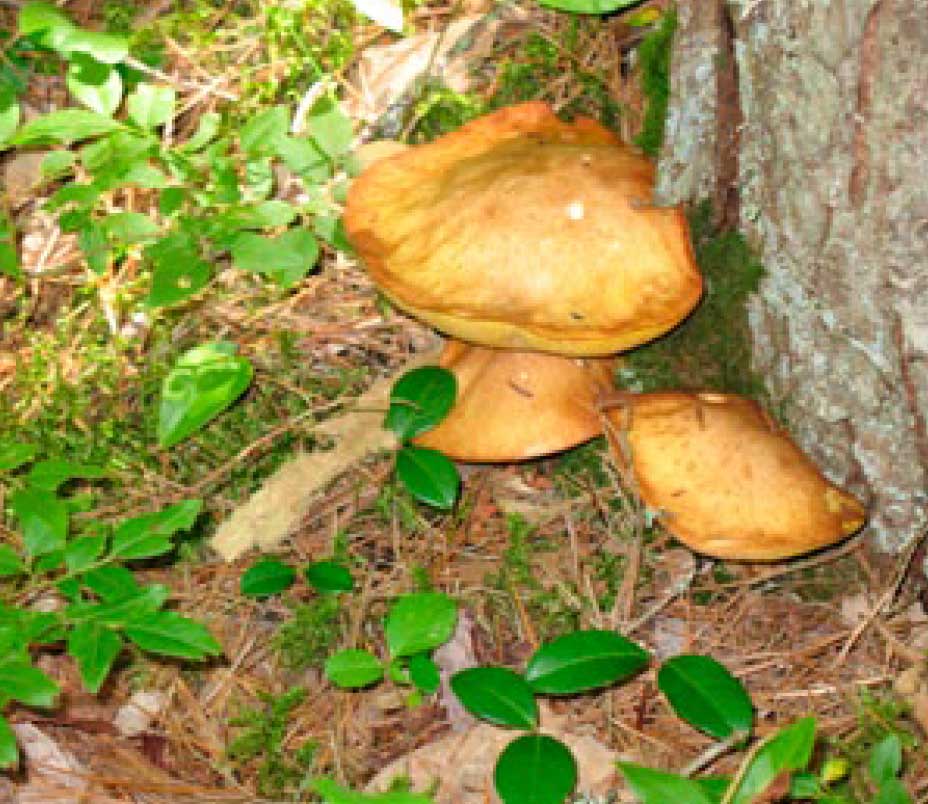 |
| Mushrooms are evidence of complex life beneath the forest soil. |
Soils rich with fungal strands are important to wildlife species that require such concentrated masses of mycorrhizae for food. Examples include flying squirrels, red-backed voles and blue-spotted salamanders that rely on a nutritious moist environment for food.
Mycorrhiza is an important driver in the cycling of forest soils.
Why Harvest?
Harvesting your woodland is an important decision which should be based on the condition of your forest stands.
Timber harvesting can be undertaken for a variety of reasons, including:
- Selling your trees for a profit
- Creating conditions suitable for the next crop (regeneration)
- To promote the growth of crop trees
- Ensuring a renewable source of forest products over the long term
- Enhancing the visual appearance of a stand
- Developing stand characteristics suitable for wildlife
- Promoting other values of your woodland, such as recreation
- Salvaging the financial value of a stand damaged by insects, disease or wind
- Harvesting trees for your own use
Not all trees that are cut need to be large diameter. Markets exist for small-dimension timber that can provide a good return.
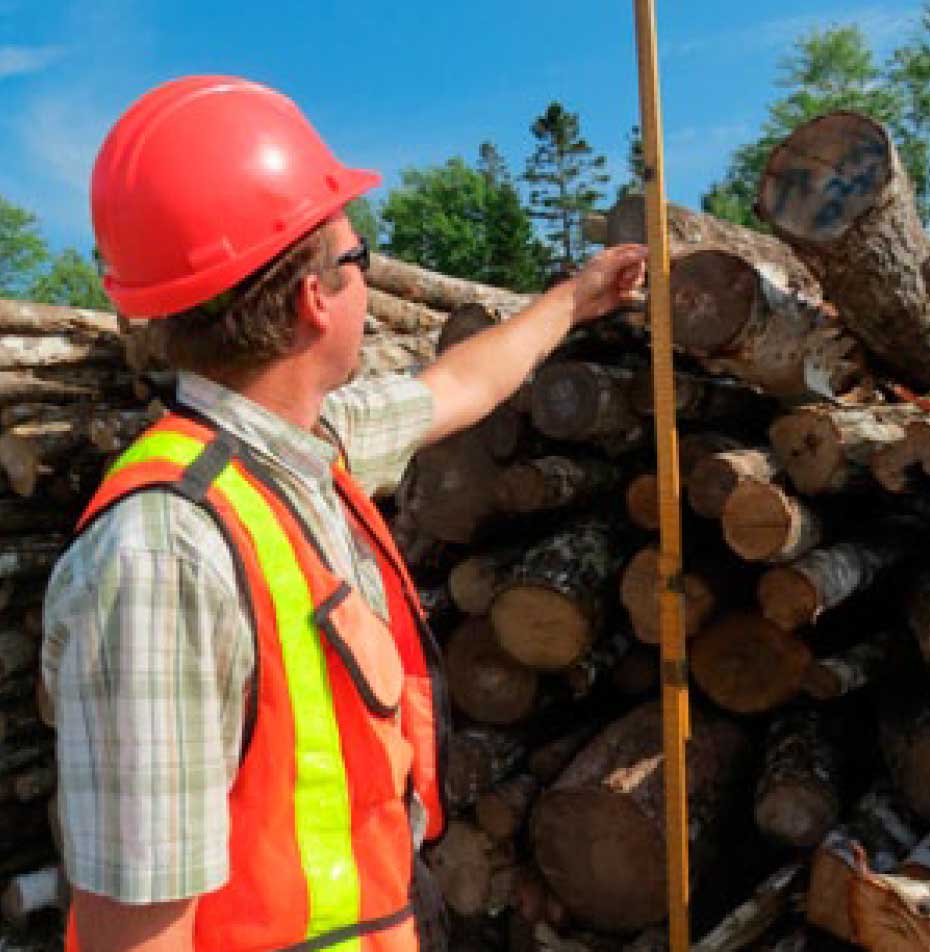 |
|
Scaling firewood for sale |
A harvesting operation must, at a minimum, include the following:
- Harvesting of a sufficient volume of wood to meet your objectives, which may include making a profit
- Protection of trees that may be left standing for future harvesting, or as wildlife habitat
- Avoiding damage to the soil through compaction and rutting, which can lead to erosion and decreased site productivity
- Protection of watercourses and wetlands which provide significant ecological values
- Operating safely and efficiently
- Leaving the harvested site in a condition that does not diminish its future use for both timber and non-timber values
- Consideration of regeneration
The terms “logging” and “harvesting” are often used interchangeably. Both refer to the process of felling, processing and extracting the timber to a site where it is accessible to trucking.
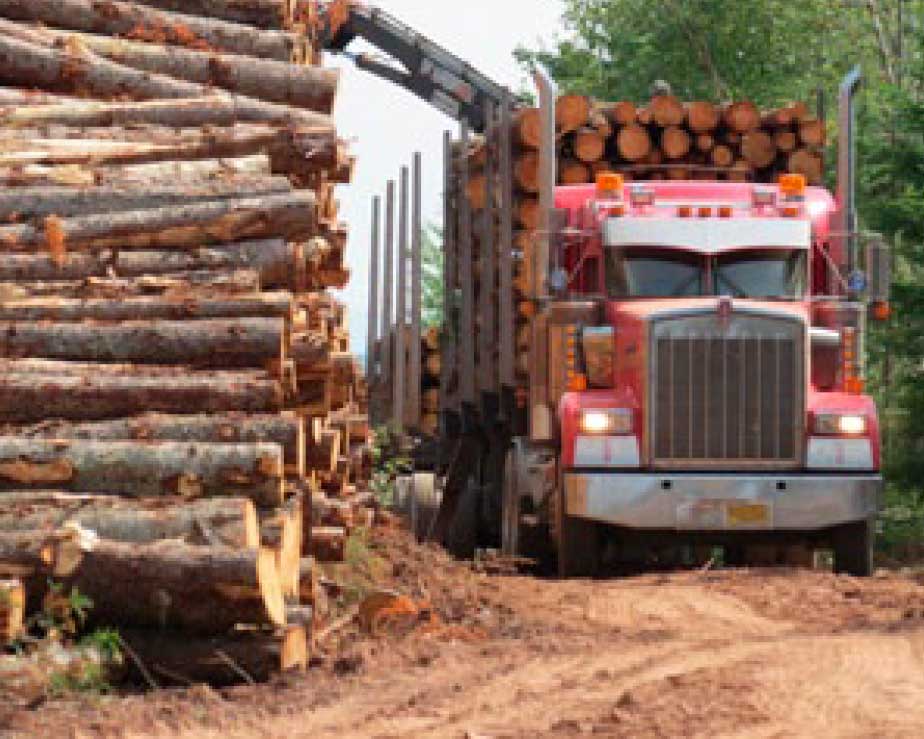
Trucking is an essential of every harvesting operation
For successful timber harvesting to occur, a number of factors must be considered. Think of moving several hundred (or thousand) tonnes of heavy, bulky trees over rough ground, then transporting them to a mill perhaps hundreds of kilometers away. You must do this while protecting the integrity of the forest ecosystem, including the soil, watercourses, standing trees and existing seedlings and other plants. This task obviously cannot be taken lightly!
 |
| Disease or insect outbreaks may hasten harvesting decisions, such as in this stand of white spruce killed by bark beetle |
Once a stand is overmature or infested with insects or infected with disease, there may be few alternatives to harvesting, other than letting the dynamics of the stand run its natural course.
Wildlife Considerations during Harvesting
When large, overmature trees die, they become valuable habitat for many species of wildlife. As discussed in Module 4, the trees that offer the most benefit to wildlife are large-diameter, shade-tolerant hardwoods such as sugar maple, yellow birch and red oak. Due to damage caused by wind, lightning strikes and resulting rot, these trees can have large hollows that make ideal nests and dens for a variety of species. These trees may live for centuries, providing steady shelter for large and medium-size mammals and birds.
 |
|
Some trees create good wildlife habitat |
Large trees also provide good platforms for stick nests. Hawks, owls and eagles usually require large trees in which they can build their nests. You may find a barred owl nest in a yellow birch tree that has a wide, spreading crown. If you have white pine trees that are standing head-and-shoulders above all the other trees on your woodland (these are called supercanopy trees), bald eagles may have built a stick nest in one or more of them.
Knowing your woodland and the kinds of wildlife habitat that use it can help you make good decisions when you wish to harvest timber. Spending some time walking your woodland looking for signs of wildlife is time well spent. Don’t forget to look up: stick nests are easy to overlook. Pay attention to trees that have died and are still standing (snags), since cavities can hold the nests of saw-whet owls, American kestrels and other small predatory birds.
A forest raptor that requires undisturbed areas of large trees for nesting is the northern goshawk. Although uncommon, goshawks have territories that can include both dense cover and open woodland.
 |
| Northern goshawk. Photo courtesy of NSDNR |
Planning Your Harvest
We’ve all heard the saying, “Measure twice, cut once.” And once a tree is cut, there is no way of putting it back! For that reason, it’s important to have a clear and thorough plan in place.
Some of the questions that need to be answered when planning your harvest include:
- What wood markets are available and what are the prices?
- What wood products can I produce?
- Is the timing right, including suitable ground conditions?
- Can I access the stands to be harvested?
- What equipment is best suited to the job?
- Will my revenue cover my expenses, and will I make a reasonable profit?
- Should I do the work myself or hire a contractor?
- How will the harvest impact the other values that I have for my woodland?
- Will the harvest impact neighbouring woodland?
 |
| Plan your work, work your plan |
Timing Your Harvest
Many birds such as hawks and owls begin breeding and building their nests in early spring, so it is important to avoid disturbing them at this time of year. Once eggs are laid, birds are very prone to even small disturbances and will leave their nests if the disturbance is prolonged.
If you are planning a harvest during a given year, both the stand that is considered for harvest and the area around it should be thoroughly inspected for stick nests and large cavity trees. If it appears that they are in use by hawks, owls or eagles, buffer zones should be established with flagging tape and every effort should be made to avoid disturbing the birds. Any sizable stick nest should be reported to your Regional NSDNR Wildlife Biologist.
During the active nesting months of May and June, it may be prudent to avoid working in the area altogether, since the noise of chainsaws or heavy equipment can persuade raptors to leave their nests and young.
It is good to keep tabs on what is happening on your woodland at all times of the year – even in winter. Areas of thick conifer (softwood) cover are frequently used by whitetail deer during winters of heavy snow. These sites are called deer wintering areas and can be several hectares in size. Within these stands the snow is less deep and the air temperature a little warmer than surrounding areas, making a difference in survival for deer that tend to congregate here. If a deer wintering area is slated for harvesting, ensure that there is an alternate area nearby in which deer can take refuge during winters of heavy snow.
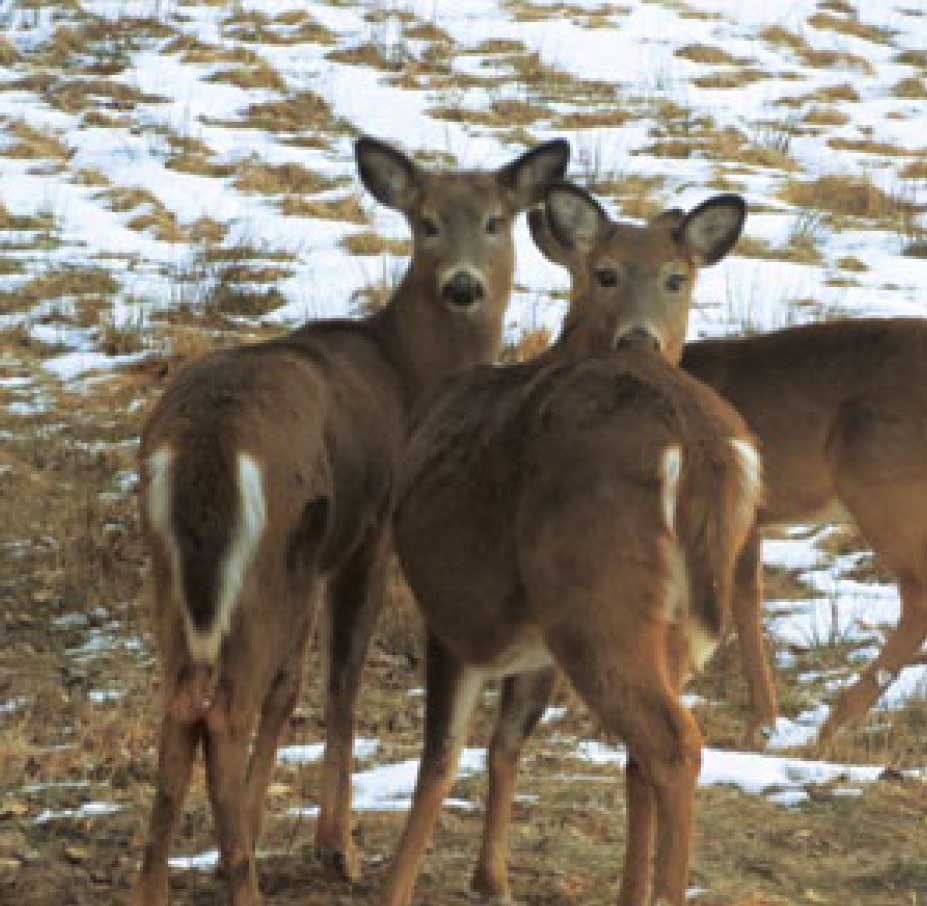 |
| During winter, whitetail deer forage for food in open fields, but prefer to shelter in thick cover. |
Considering the seasonal conditions of your forest soils can help you avoid problems with soil compaction and rutting caused by heavy equipment. During wet seasons, forest soils can be significantly damaged by equipment as light as a farm tractor. Wetter sites may be better left for drier times of the year, or during periods when soils are frozen.
Ponder Regeneration Prior to Harvesting
Before cutting even a single tree, progressive woodland owners consider what will replace it, and how that will occur. It’s important to plan for healthy regeneration in areas that are about to be harvested.
You may wish to ask yourself the following:
- Is a good seed source available that will provide an abundance of robust, healthy seeds?
- Are the available seeds from species that are suited to the site, and to my future plans?
- Will the seed be available during a good seed crop year?
- Will I need to partially, or fully, plant the site to achieve an adequate, even distribution of new trees over the entire site?
- If the site will require planting, where will I obtain the seedlings and who will plant them? And how much will it cost? Will the site need preparation for planting?
- How will I control competing vegetation?
- Is there silviculture assistance available for the type of harvesting that I wish to do?
- Take note of advanced regeneration. Is it good quality? How tall is it? Will it be damaged by the harvesting operation?
- What vegetation and soil types are present? Can I identify the forest ecosite type?
These are just a few of the many questions that should be answered before a site is harvested.
